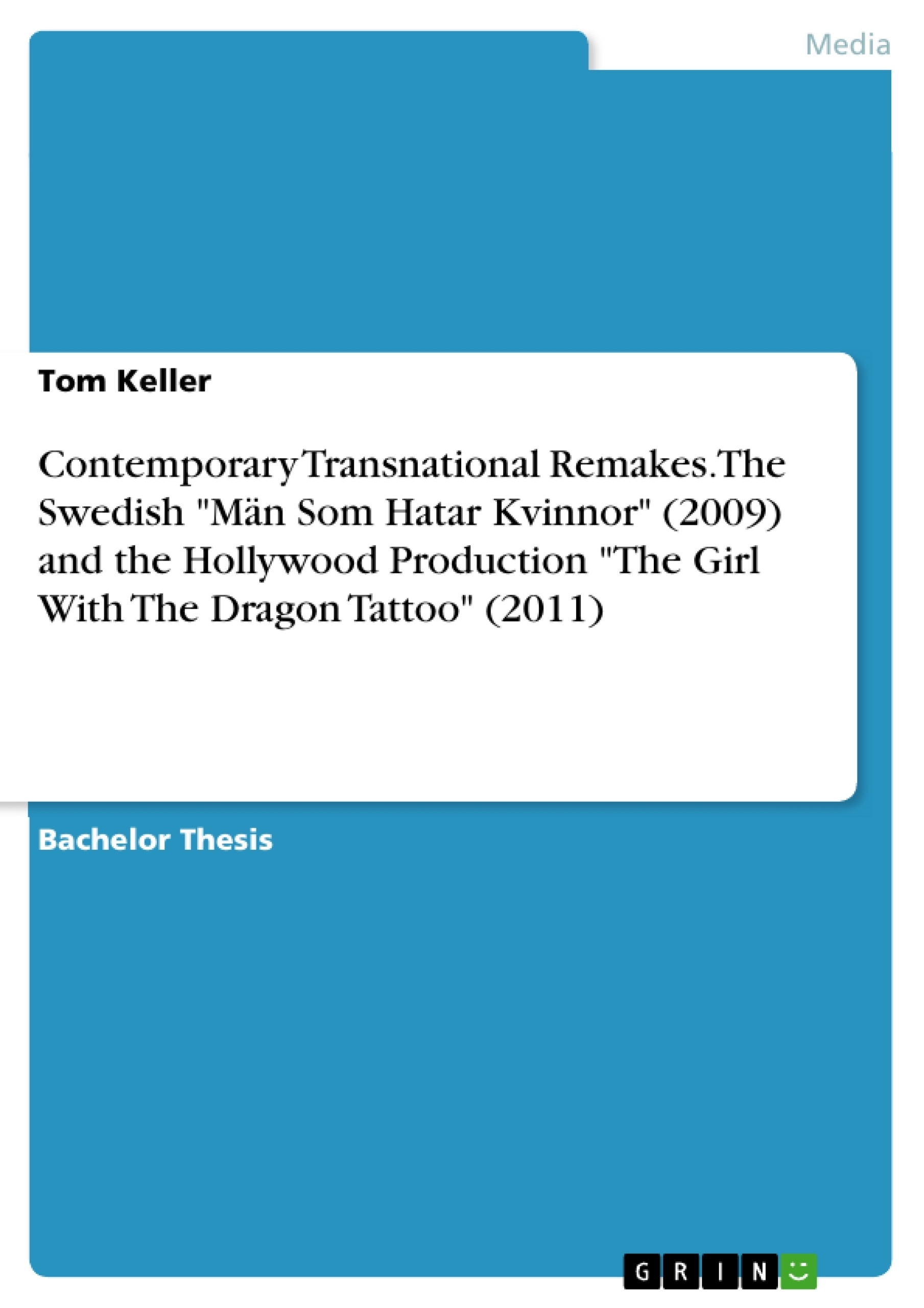On the 20th December 2011 a new Hollywood film was released throughout North America. It was a remake, a film based on another one, starring Hollywood stars such as Daniel Craig and Christopher Plummer and attracting a bit more medial attention than usual. The reason was that the film was released quite soon after its predecessor. More specifically, only two years had passed since the global success of the original Swedish film "Män Som Hatar Kvinnor", directed by Niels Arden Oplev, which was released in 2009.
As a result, ever since its announcement the remake with the title "The Girl With The Dragon Tattoo" triggered many discussions. People wondered why the world needed another American remake of a successful and critically acclaimed movie so quickly after its original release. Looking back, remakes have always been an integral part of the Hollywood film industry, which has been copying ideas from other film industries ever since its emergence in the beginning of the last century. European, Asian or even previous American films were remade whenever it seemed to be profitable and in this case it seemed very promising, given the great success of the movie outside the US. Basically, from the American perspective several reasons exist to justify a remake of a film, for example the updating of an old movie to present it to younger generations or the fact, like in this case, that a remake is allegedly “necessary” because people in the US do not like reading subtitles or listening to synchronized non-English movies. However, some people simply accuse Hollywood of desperately trying to show the world how to do it in a better way and hiding their lack of new ideas.
Such transnational remakes are still in progress and have been going on for decades, not only in the US but also worldwide. Bollywood copies American films, Hollywood borrows narratives from Europe and European film makers get their inspiration from American productions. It is evident that such contemporary transnational remakes are a worldwide phenomena increased by the globalization which enables people to share and trade cultural goods and ideas all over the globe.
Inhaltsverzeichnis (Table of Contents)
- Introduction
- Definitions
- Transnationalism
- The Remake
- Contemporary Transnational Remake
- What is Gender?
- The Girl With The Dragon Tattoo - A Transnational Remake
- Characterization
- Lisbeth Salander
- Mikael Blomkvist
- Comparison of the Character Constellation
- Character Constellation in Män Som Hatar Kvinnor
- Character Constellation in The Girl With The Dragon Tattoo
- Conclusion
Zielsetzung und Themenschwerpunkte (Objectives and Key Themes)
The aim of this bachelor thesis is to demonstrate how the characters in Fincher's remake, The Girl With The Dragon Tattoo, differ substantially in terms of behavior, appearance, and character compared to the original Swedish film, Män Som Hatar Kvinnor. This analysis will explore how these differences impact the viewer's perception of characterization, character constellation, and gender roles.
- The impact of transnational remakes on character portrayal.
- The role of gender and gender roles in film adaptations.
- The influence of cultural context on character representation.
- The comparison of character constellations across different film adaptations.
- The analysis of how character dynamics contribute to the overall narrative.
Zusammenfassung der Kapitel (Chapter Summaries)
- Introduction: This chapter introduces the topic of transnational remakes, specifically focusing on the comparison between The Girl With The Dragon Tattoo and Män Som Hatar Kvinnor. It explores the motivations behind remakes and highlights the unique context of this particular adaptation.
- Definitions: This chapter defines key terms such as transnationalism, remake, contemporary transnational remake, and gender. It provides a theoretical framework for understanding the concepts relevant to the analysis.
- The Girl With The Dragon Tattoo - A Transnational Remake: This chapter examines the specific features that qualify The Girl With The Dragon Tattoo as a transnational remake. It analyzes the film's adaptation process and its relation to the original Swedish film.
- Characterization: This chapter focuses on the characterization of Lisbeth Salander and Mikael Blomkvist in both films. It explores the differences in their portrayal, highlighting the impact of casting and directorial choices.
- Comparison of the Character Constellation: This chapter compares the character constellation in both films, examining how the relationships between characters evolve and change in the remake. It analyzes the consequences of these changes for the overall narrative.
Schlüsselwörter (Keywords)
This bachelor thesis explores the themes of transnational remakes, characterization, gender roles, and the impact of cultural context on film adaptation. It examines the differences in character portrayal and character constellation between the Swedish film Män Som Hatar Kvinnor and the American remake The Girl With The Dragon Tattoo, providing insights into the complexities of adapting narratives across cultural boundaries.
- Quote paper
- Tom Keller (Author), 2012, Contemporary Transnational Remakes. The Swedish "Män Som Hatar Kvinnor" (2009) and the Hollywood Production "The Girl With The Dragon Tattoo" (2011), Munich, GRIN Verlag, https://www.grin.com/document/319486
-

-

-

-
Upload your own papers! Earn money and win an iPhone X. -

-
Upload your own papers! Earn money and win an iPhone X. -

-
Upload your own papers! Earn money and win an iPhone X. -

-
Upload your own papers! Earn money and win an iPhone X. -

-
Upload your own papers! Earn money and win an iPhone X. -

-
Upload your own papers! Earn money and win an iPhone X. -

-
Upload your own papers! Earn money and win an iPhone X. -

-
Upload your own papers! Earn money and win an iPhone X. -

-
Upload your own papers! Earn money and win an iPhone X. -

-
Upload your own papers! Earn money and win an iPhone X.

